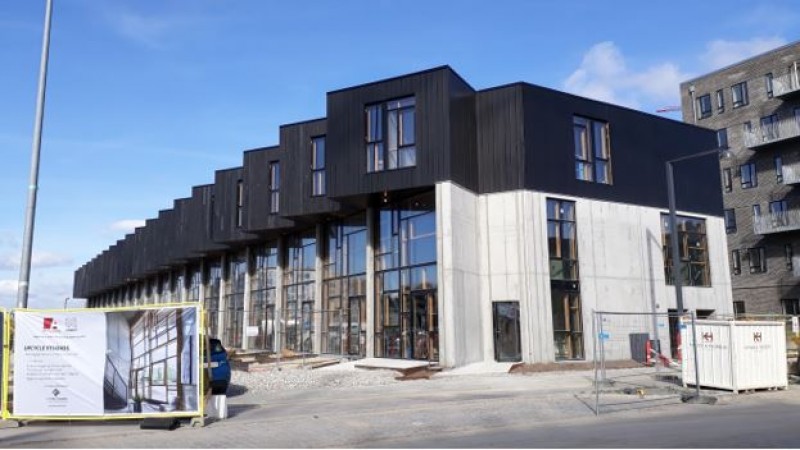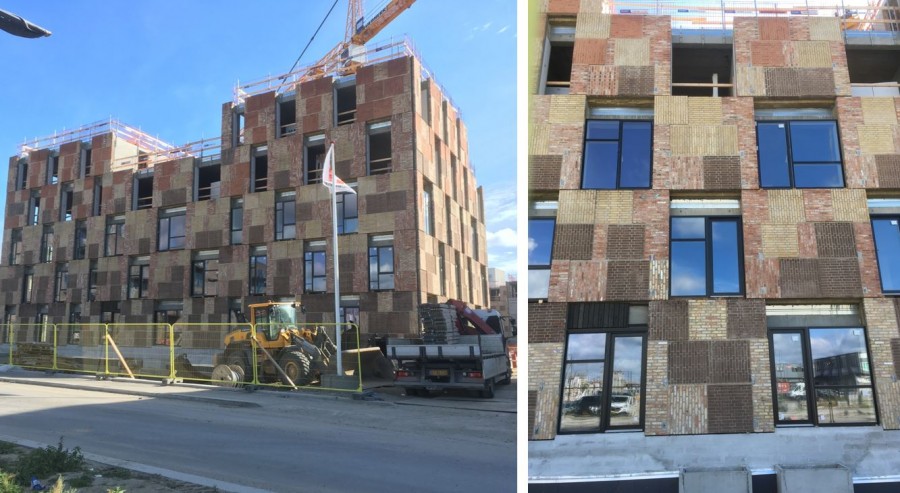Circular economy practices in Copenhagen – Could we build this way?
Circular Economy – A Game Changer for the Wood Building Industry (CE Wood) –project carried out a study visit to the Netherlands and Denmark in September 2018. The project visited construction projects where the principles of circular economy are implemented. One interesting building project was seen in Ørestad, Copenhagen, where two Lendager Group apartment blocks are being built. Most of the building materials are recycled. Windows, wood, concrete and bricks have been obtained from old buildings.
Recycling of used windows and concrete
In a three storey building, Upcycle Studios, 75% of the windows are recycled and come from abandoned buildings in North Jutland. The wall elements of the first two storeys are made of recycled windows. The front of the third storey and the floors of the building are produced of offcuts from wood companies. Also 1400 tons of recycled concrete are casted from very durable concrete waste from the construction of Copenhagen Metro.

Picture 1. Upcycle Studios in the Ørestad South district of Copenhagen, 75 percent of the windows come from abandoned buildings.
Reuse of brick walls and wood
In the same area, a five-storey brick-paved apartment building, the Resource Rows, is also being constructed. The innovative concept in the project is to reuse entire brick walls from abandoned homes directly in the new building. By cutting the wall modules of the abandoned homes and installing them in steel frames, they can be used as wall modules in the new building. Brick modules are cut out from Carlsberg’s historical breweries in Copenhagen. The rest of the bricks come from various old schools and industrial buildings around Denmark. There are also recycled wood based materials from the Copenhagen Metro construction, that are being used on the Resource Rows outer coverage and on the interior surfaces. Remanufactured lumber has been treated to last and look beautiful.

Picture 2 and 3. The bricks for The Resource Rows are cut out in modules and stacked up to create the new walls of the building.
There are also recycled wood based materials from the Copenhagen Metro construction.
This article has also been published in Finnish in EPKYBLOG (Blog of Etelä-Pohjanmaan korkeakouluyhdistys)
Text and pictures
Virpi Palomäki
Researcher
Tampere University of Technology
